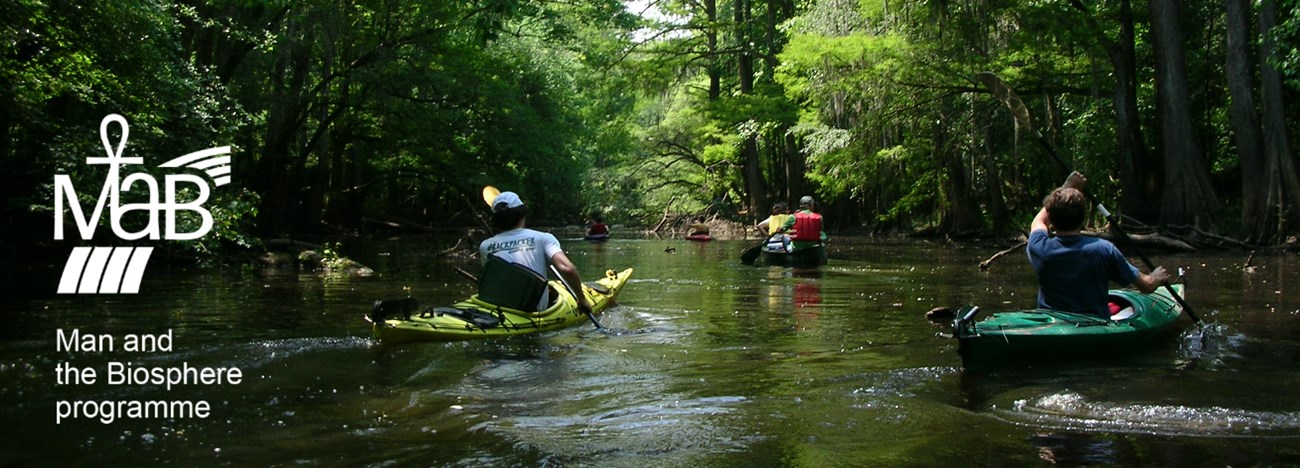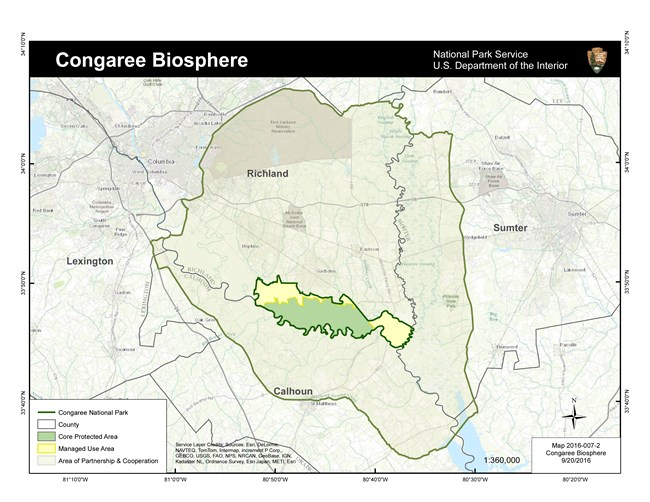
Background The United Nations Educational, Scientific, and Cultural Organization (UNESCO) designated the CBR because of the area’s unique combination of natural resources and cultural heritage. Natural resources in the CBR include the globally significant, old-growth bottomland hardwood forest tracts at Congaree National Park. This forest, which is the largest, contiguous, in-tact expanse of such forest remaining in North America, supports an astonishing diversity of champion-sized trees. While the Congaree and Wateree rivers are fed by immense, multi-state watersheds, the CBR also encompasses the local watersheds that are crucial to sustaining the old-growth forest. These same watersheds and forests also provide ecosystem services, such as clean air and clean water, with benefits far beyond the CBR border. Long, rich, and complex cultural legacies in the CBR encompass native American traditions, African American culture (including slavery, maroonage, and a powerful Reconstruction story), colonial and Revolutionary war history, outdoor recreation heritage, agricultural and logging heritage, transportation history from railroads to steamships, moonshining, and more. A number of artists, writers, and performers have expressed—and continue to express—these evolving legacies. Biosphere Regions (also called Biosphere “Reserves” in many areas) including the CBR offer a local, geographic context for diverse organizations and residents to collaborate on sustainable resource use and development. Biosphere Regions/Reserves are strictly voluntary partnership opportunities, and have no authority over local organization’s resources, regulations, activities, or operations. As part of both the World Network of Biosphere Reserves and US Biosphere Reserve Network the CBR is connected with communities and experts engaged in similar efforts around the world. This allows the CBR both share with and learn from other examples for research, education, sustainable development. 
Geography of the Congaree Biosphere Region
Organization The CBR designation was made in 1983, but under-developed and under-utilized for many years until a required 2016 Periodic Review process. This breathed new life and momentum into the partnership framework. A working group of CBR partners has been meeting since 2016, but have not formed a formal organization because an agreement between too many partners proved too complicated. As of April, 2021, however, a new agreement signed by the Southeast Rural Community Outreach, the Central Midlands Council of Governments, and Congaree National Park will convene the first official CBR Advisory Council. Through the agreement these partners will expand the council to engage other working group members as well as new partners.Key goals for the Advisory Council’s work include the following:
|
Last updated: June 11, 2025
